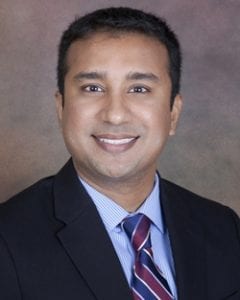Cardiology Department

Hours of Service:
Monday through Friday
9:00 am-5:00 pm
Appointments:
NEW HARTFORD LOCATION:
1729 Burrstone Road,
New Hartford, NY 13413
The Heart Center
Getting to the Heart of the Matter
The Heart Center at Slocum-Dickson is a dedicated group of physicians, Nurse Practitioners, and Technicians providing diagnostic and treatment services in support of local primary care physicians. We get right to the heart of the matter with a full complement of risk factor screening techniques and interventional procedures, conducted at our fully-equipped state-of-the-art facility here at our New Hartford location and at area hospitals when necessary.
When it comes to maintaining your heart, you want the very best medical science can provide. That’s exactly what you’ll find at The Heart Center.
Providing treatment for you and your loved ones is more than just a matter of good science; proper care is also built on compassion. At the Heart Center at Slocum-Dickson, our skilled professional staff delivers care with concern and a commitment to excellence that has been our trademark since 1938.
Consult with the Heart Center at Slocum-Dickson, and you’ll discover what local families have known for many years. Our heart is in the right place.
Slocum-Dickson’s Interventional Cardiologist
 Prasanna V. Kumar, MD Is a Fellowship trained Interventional Cardiologist specializing in coronary, structural and peripheral interventions. Dr. Kumar treats a variety of cardiovascular conditions including but not limited to: coronary artery disease, valvular heart disease, atrial septal defects, patent foramen ovale, peripheral artery disease, heart failure, and some types of cardiac arrhythmias.
Prasanna V. Kumar, MD Is a Fellowship trained Interventional Cardiologist specializing in coronary, structural and peripheral interventions. Dr. Kumar treats a variety of cardiovascular conditions including but not limited to: coronary artery disease, valvular heart disease, atrial septal defects, patent foramen ovale, peripheral artery disease, heart failure, and some types of cardiac arrhythmias.
He is skilled in various interventional procedures including but not limited to: cardiac catheterization, coronary angioplasty, stenting, intravascular ultrasound, fractional flow reserve, thrombectomy, balloon valvuloplasty, percutaneous closure of patent foramen ovale and atrial septal defects, intracardiac echocardiography, peripheral angioplasty, stenting and atherectomy procedures.
Dr. Kumar completed his Interventional Cardiology Fellowship at the Mayo Clinic, Rochester, MN and his Cardiovascular Diseases Fellowship at Louisiana State University Health Science Center in Shreveport, LA. He completed his Internal Medicine Internship and Residency at Rosalind Franklin University of Medicine and Science at the Chicago Medical School in North Chicago, IL where he also served as Chief Resident. Dr. Kumar earned his Medical Degree from Madras Medical College in India. Dr. Kumar also served as a Clinical Instructor of Medicine and Clinical Assistant Professor of Medicine for Southern Illinois University School of Medicine.
Dr. Kumar is Board Certified in Interventional Cardiology, Cardiovascular Diseases, Vascular (General and Endovascular Medicine), Nuclear Cardiology and Echocardiography. Dr. Kumar is a member of several professional societies including; the American College of Cardiology, the Society of Cardiovascular Angiography and Interventions, the American Medical Association, the American Society of Echocardiography, and the International Association of Cardiologists.
Procedures & Services
ECHOCARDIOGRAM
Echocardiogram, or echo test, is a safe, non-invasive test, that uses ultrasound (sound waves) to evaluate the structures, function and blood flow of the heart.
STRESS TEST
Stress test, sometimes called a treadmill test or exercise test, determines how well the heart handles work, especially in patients who have symptoms of heart disease. This test is used for screening and diag-nosing blockages. The Heart Center performs both walking and non-walking stress tests including; Stress Echo, walking Cardiolite, Adenosine, Persantine and Dobutamine Stress Echo.
HOLTER MONITOR/EVENT RECORDERS
These devices record a person’s heart rhythm over an extend-ed period of time. A Holter monitor is generally worn for 24 hours, while an event monitor can be kept for weeks at a time. Abnormalities of the Heart rhythm do not always occur while the patient is in the doctor’s office being examined and it is important to record an abnormal or erratic heart rhythm.
TRANSESOPHOGEAL ECHOCARDIOGRAM
A diagnostic test that analyzes sound waves bounced of the heart by inserting a special probe into the esopha-gus. This technique is useful in studying patients, whose heart and vessels for various reasons, are diffi-cult to assess with a standard echocardiograph.
PACEMAKER IMPLANTATION
Pacemaker implantation is a minimally invasive surgery performed under local anesthesia. The pacemaker devise is implanted in the patient’s chest to regulate the heart’s rhythm.
PACEMAKER MONITORING
Pacemaker monitoring can determine if the pacemaker is pacing properly, sensing the heart’s nat-ural beats properly, delivering enough energy and if the battery is getting low.
CARDIAC CATHERIZATION
Cardiac catherization is a prime tool for visualizing the heart and blood vessels and diagnosing and treating heart disease by inserting a thin plastic tube or catheter through an artery or vein in the arm or leg and into the heart and coronary arteries in the heart.
ANGIOPLASTY
Angioplasty is a procedure used to dilate (widen) narrowed arteries by inserting a catheter with a deflated balloon into the narrowed part of the artery. The balloon is then inflated so blood can flow more easily, then it is removed.
STENTING
Stenting can be placed at the site of a narrowing artery to keep the artery open.
LIPID CLINIC
Lipid clinic is an intensive evaluation and treatment of cholesterol and triglyceride levels in a ded-icated center.
ELECTROPHYSIOLOGY STUDY
Electrophysiology study is a minimally invasive catheter procedure which is used to study the cardiac electrical system. This study can uncover arrhythmias and other heart rhythm abnormalities.
IMPLANTABLE DEFIBRILLATOR
Implantable defibrillator is used to treat serious arrhythmias. The device monitors heart rhythms and delivers an electrical shock if an abnormal rhythm is detected.
CARDIAC ABLATION
Cardiac ablation is used to locate the tissue that is causing the arrhythmia and to destroy or ablate it.
PERIPHERAL ARTERY DISEASE (PAD)
Peripheral artery disease (PAD) can be treated using a variety of endovascular interventions including: Atherectomy, drug coated balloons, stenting and angioplasty.
